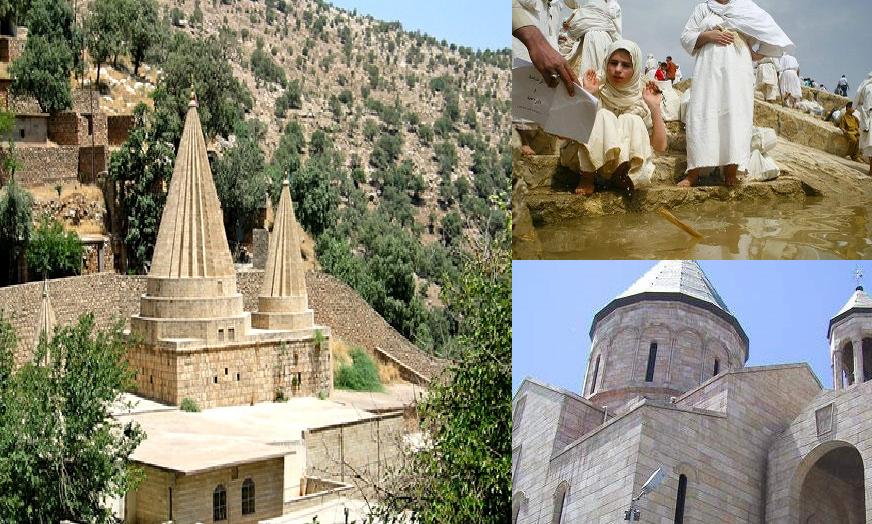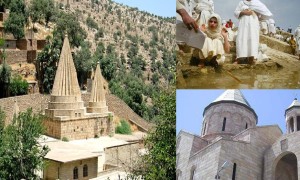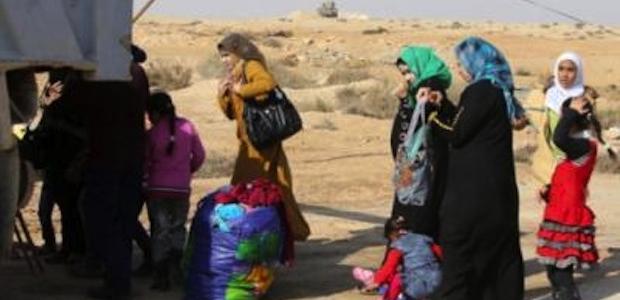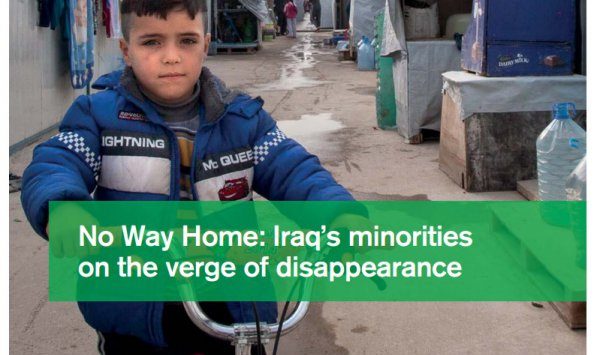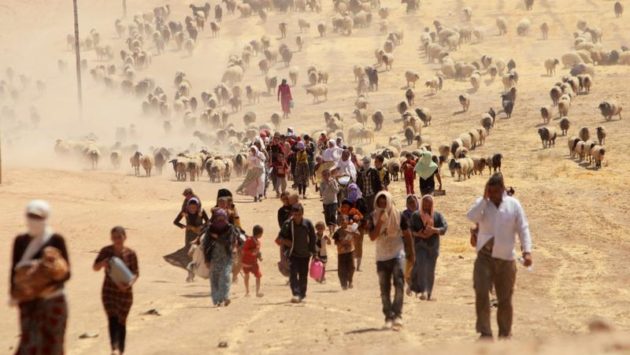Iraq’s Minorities Left between Scorpions and a Hard Place
Letta Tayler
Published in: CNN
Sunday wasn’t a good day in northern Iraq’s al-Hamdaniyah district. The previous night, Sunni extremist militants had snatched 26 Shia Turkmen from their homes. For the second week, residents had no running water and almost no electricity. The local hospital was almost out of medicine, and the doctor running the emergency room was fretting about scorpions.
“We still have anti-venom for the snake bites, but nothing left for the scorpions,” said the doctor, Zakar Bayati. “The scorpions here can kill small children.”
Bayati, a pediatrician, had stepped in as emergency room chief because most of the hospital’s doctors were huddled in their homes 25 kilometers northwest in Mosul, Iraq’s second-largest city, too scared to travel to work. The hospital usually had 15 doctors, Bayati said. During my visit to the hospital on Tuesday in Bakhdid, the district’s largest town, they had four.
Mosul fell June 10 to the armed militant group Islamic State of Iraq and Syria (ISIS). Thousands of Iraqi government troops and civilians fled east across al-Hamdaniyah and other parts of the Nineveh Plains, a religiously diverse region that includes Assyrian and Chaldean Christians, Turkmen, Shabaks, and predominantly Kurdish Yazidis. ISIS followed, coming within 100 meters of Bakhdida, a local police official and two generals from the area said in interviews there.
The drive to Badkdida, a 30-kilometer trip west from Kurdistan’s capital, Erbil, involved passing five peshmerga checkpoints. The eastbound lane was jammed with cars of Iraqis fleeing to already overflowing Kurdish refugee camps.
Authorities in Kurdistan, an autonomous region of northeastern Iraq that has designs on the oil-rich Nineveh Plains, have dispatched 1,500 Kurdish peshmerga troops to al-Hamdaniyah to keep ISIS at bay. But the security officials, who spoke on condition of anonymity, said that hundreds of ISIS fighters remained in Namrud, a township just 5 kilometers from Bakhdida past the peshmerga cordon.
The night before my visit, ISIS gunmen had entered al-Shansiat, another community just south of the peshmerga line in al-Hamdaniyah. They seized 26 Shia Turkmen, prompting scores of other Shia families from those two minority groups to flee the area, the security officials and a local Christian leader said. “We don’t know what they will do to them – take them to fight or kill them,” the local police official said.
Around that same time, ISIS was rounding up and executing groups of Shia Turkmen in villages outside of the city of Kurkuk, to the south.
ISIS has refrained from fighting the peshmerga, but al-Hamdaniya residents feared that standoff might not last. “DA’ASH is too close,” said Badr, an Assyrian shopkeeper in Bakhdida, using the Arabic acronym for ISIS. “And what happens if the peshmerga leave?”
Next to Badr’s shop, the local kebab restaurant and most other stores were shut or empty. As part of a nationwide shortage of basic services caused by the fighting between ISIS and the Iraqi government, most al-Hamdaniyah residents have no running water and almost no electricity or fuel, grinding most activities to a halt.
Religious minorities in al-Hamdaniyah and the rest of the Nineveh Plain have historical reasons to be fearful. Long before ISIS’s rise last year, extremist Sunnis have systematically killed, displaced, and threatened the Chaldo-Assyrian, Yazidi, and Shabak communities, labeling them crusaders, devil-worshipers, and infidels, Kurdish authorities, meanwhile, are pressuring the groups to support their drive to incorporate Nineveh into Kurdistan.
Bombings in Nineveh in August 2007 by suspected armed Islamists killed more than 300 Yazidis and wounded 700. In May of this year, suspected ISIS gunmen shot dead six Yazidi farmers in Nineveh, prompting thousands of other Yazidis to flee to Sanjar, a town west of Mosul, only to find themselves caught in fighting in recent days between Shia and ISIS fighters there.
In addition to fearing for their lives now, al-Hamdaniyah’s Chaldo-Assyrian Christians, who comprise 70 percent of the district’s population, also expressed broader concerns about their future, saying the current fighting may bring the longstanding Kurdish-Arab contest for control of Nineveh to a head.
Their fears were echoed by the Chaldean patriarch Louis Sako, the leader of Iraqi Christians. He told me during my visit to Bakhdida that the situation for his flock was “critical.”
“As a minority we face a double threat,” Sako said while visiting 35 displaced families from Mosul who were living in classrooms in the town’s theological center.
“The country will be divided, it is clear,” Sako said, referring to proposals to carve up Iraq into three separate political entities for Sunni, Shia, and Kurds. “Where does that leave the Christians?”

